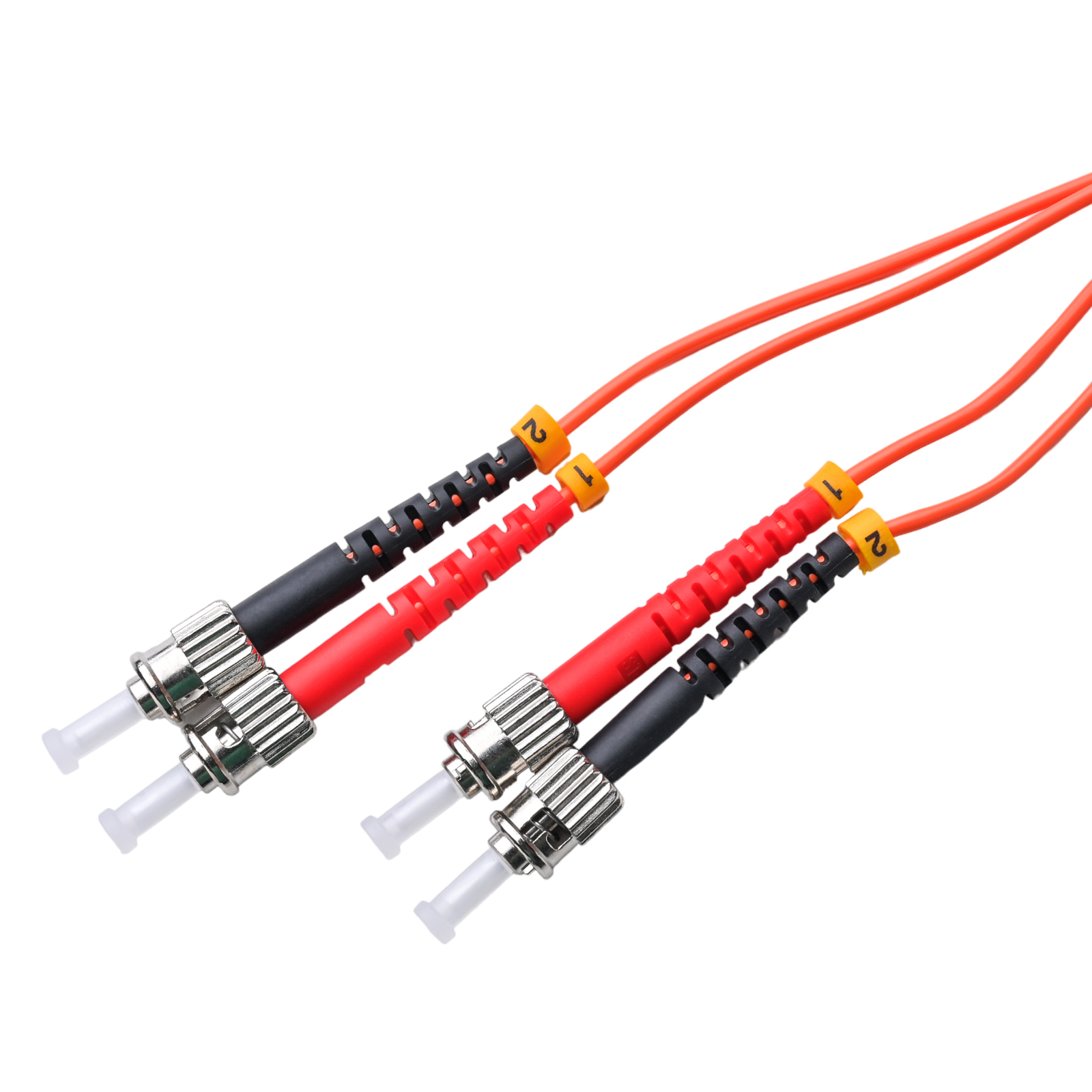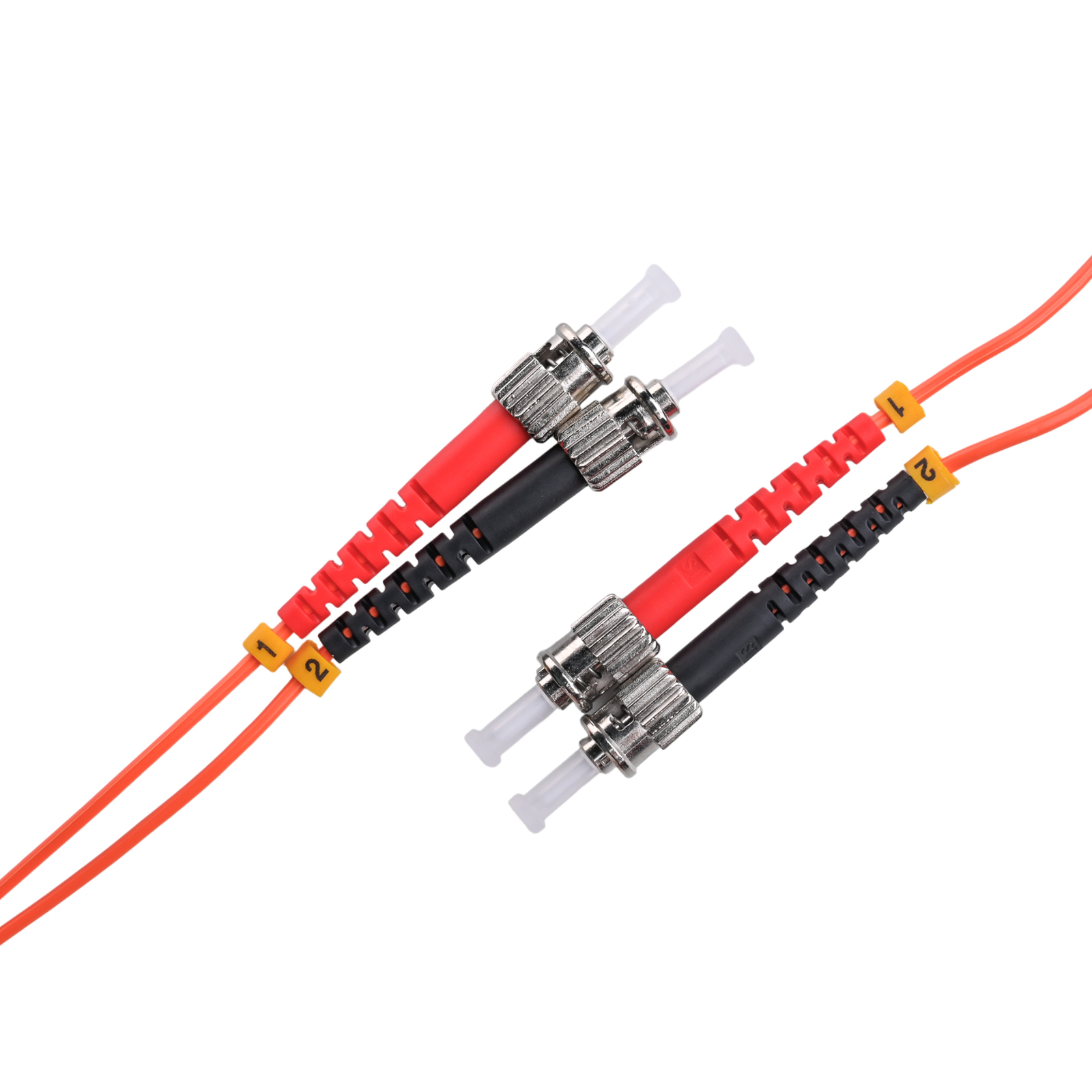Description
Patchcord ST/UPC – ST/UPC 62.5/125 Multimode OM1 Duplex Zip 2.0mm OFNR Orange
Shaxon’s ST/UPC – ST/UPC 62.5/125 OM1 patch cords feature a rugged orange 2.0.mm duplex zip cord jacket and high quality ST connectors. Polarity is clearly marked with yellow polarity labels.
The ST connector remains one of the most widely used connectors especially for multimode networks such as college campuses and most buildings. The connector is very easy to use due to its spring-loaded, keyed, and ?push in and twist? mechanism within its design. The ST connector features a bayonet mount and a long cylindrical 2.5mm ceramic or polymer ferrule to hold the fiber.OM1 cable typically comes with an orange jacket and has a core size of 62.5 micrometers (?m). ?It can support 10 Gigabit Ethernet at lengths up 33 meters. ?It is most commonly utilized for 100 Megabit Ethernet applications. When weighing your options between on-premises and access network fiber replacement or new installation, we highly recommend replacing legacy OS1 with a new bend-insensitive OS2 (ITU-T G.657A1) SMF cabling system to support longer reach with enhanced link performance.
For other ultra-long-distance transmissions that employ exclusively C-band and L-band with optical amplifiers, refer to the ITU-T recommendations for the most appropriate SMF types.
Multi-mode fiber is typically cost effective for inside buildings or corporate campuses while single-mode is better suited for longer distance runs. Single-mode fiber can transmit over greater distances but typically requires more expensive equipment. Multi-mode is cost effective for installations where the lengths do not exceed a few hundred meters. The International Telecommunication Union (ITU) is the United Nations specialized agency for information and communication technologies ? ICTs.
Founded in 1865 to facilitate international connectivity in communications networks, we allocate global radio spectrum and satellite orbits, develop the technical standards that ensure networks and technologies seamlessly interconnect, and strive to improve access to ICTs to underserved communities worldwide.





